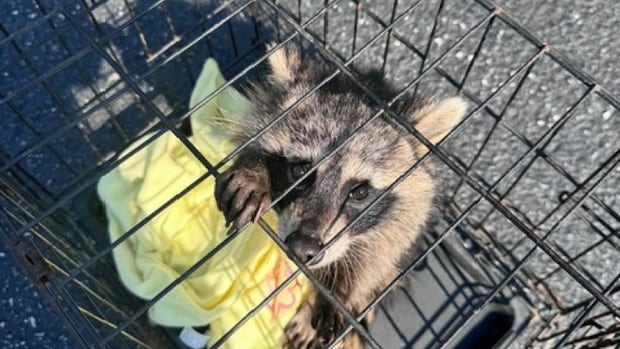Strychnine had long been the preferred pesticide for gopher control in Alberta — until the federal government began to phase out its use on Richardson’s ground squirrels in 2020 and then banned it outright in 2024.
The Government of Alberta is now calling for the controversial poison to be unbanned by the Health Canada Pest Management Regulatory Agency (PMRA).
“Alberta’s farmers and ranchers are in crisis,” reads an open letter released through social media on June 27, signed by Alberta Premier Danielle Smith, Agriculture Minister RJ Sigurdson and Minister of Jobs, Economy, Trade and Immigration Joseph Schow.
The letter, addressed to federal Agriculture Minister Heath MacDonald, calls for Ottawa “to immediately reverse the PMRA decision and reinstate the production and sale of strychnine for [Richardson’s ground squirrel] control.”
Richardson’s ground squirrels, known colloquially as gophers, “are a destructive force across the prairie provinces, threatening cereal, oilseed, pulse, forage, pasture, and horticultural crops,” the letter reads.
According to the province, “the annual risk to hay and native pasture [due to damage caused by ground squirrels] exceeds $800 million.”
A provincial spokesperson was not available for an interview ahead of publication.
In his post alongside the letter, the agriculture minister wrote that farmers “are being forced to fight this plague without their most effective tool,” referring to strychnine.
“This isn’t just a rural issue — it’s a national food security issue. Without immediate federal action, we’re staring down widespread crop failure in 2026 and a serious hit to Canada’s food supply chain,” Sigurdson wrote.
Sigurdson’s constituency office did not respond to an interview request ahead of publication.
Why was strychnine banned?
Ahead of the initial ban on strychnine’s use on Richardson’s ground squirrels in 2020, the use of the rodenticide underwent a re-evaluation by Health Canada in 2018.
An evaluation of the highly-potent neurotoxin’s use “confirmed that there are risks of concern for non-target organisms,” according to the PMRA.
“Health Canada acknowledges the value of strychnine to agricultural users because it is easy to use, cost effective and kills [Richardson’s ground squirrels] in a single feeding [but] the primary mandate of Health Canada is to prevent unacceptable risk to individuals and the environment from the use of pest control products,” the PMRA wrote in its 2020 decision.
The agency pointed to the environmental risks associated with strychnine, including potential harm to species-at-risk such as burrowing owls and swift foxes, and concluded through a scientific review that those risks “were not shown to be acceptable,” the agency wrote.

Prior to the decision, the use of strychnine on all other ground squirrel species with the exception of Richardson’s ground squirrels had been discontinued by the manufacturer.
Alberta and Saskatchewan were the only provinces in which the use of strychnine to control gophers was authorized.
The 2020 decision resulted in strychnine’s use on Richardson’s ground squirrels being phased out over the course of the next three years, with the ban taking effect in 2023.
But while strychnine was banned for use on gophers, using it to kill predators like wolves and black bears, as well as skunks, remained legal solely in Alberta.
All uses of strychnine were banned nationwide in 2024 through another PMRA decision.
“Health Canada found that strychnine uses did not meet the requirements for protection of the environment and is cancelling all uses,” the PMRA wrote.
On Friday, a Health Canada spokesperson said it’s aware of Alberta’s request to reverse its decision on strychnine, but added that to reintroduce the use of a pest-control product that’s been cancelled, Health Canada would need to receive new information that could demonstrate the product has acceptable risk and value.
Outside of Canada, the European Union has banned the use of strychnine as a rodenticide since 2006. The substance is still used to control gophers in the United States, though its use is regulated.
What gopher control looks like today
Sigurdson wrote that the strychnine ban “has left producers without viable alternatives” to control gophers.
Today, gopher populations can be managed by farmers through options like shooting and legal rodenticides.
Vulcan County farmer Ian Webber told CBC News that he’s been using a chlorophacinone product as an alternative to strychnine, but that it isn’t as effective.
“It lacks that kick that strychnine had,” he said. “There were times where you go out and poison a bunch of holes and … there’s no gophers, you’ve got them. And then with the other options, they just don’t seem to quite do the job.”

Webber, who grows canola, wheat, barley and more on his farm, said he’s had to adapt his growing strategy due to the gopher problem.
He called canola a gopher’s “meal ticket,” adding that he alternates which crops he grows in certain parts of the field to make up for gophers going after the canola.
“Depending on the year, if you’ve got a field that is really bad, you can be into the tens of thousands of dollars of damage,” he said, adding that time and effort spent controlling gophers is another expense.

Webber said he would welcome the opportunity to use strychnine again.
“It’s just an efficient and effective tool in the toolbox,” he said. “You want as many tools as you can to go after a problem that you’re facing, and that’s just one extra tool that would help.”
In neighbouring Foothills County, cattle rancher Ben Campbell said he tries to use natural inhibitors on his farm to keep gopher numbers down.

“We don’t shoot coyotes, we don’t shoot badgers,” he said.
Encouraging predators to hunt gophers on his property has helped Campbell manage the rodents.
“If [a badger] is in your field, it’s eating gophers. That’s the only thing it’s doing,” he said. “I found them to be very effective at stopping the gopher population from getting out of control.”

But he hasn’t had as much luck with predators lately, making it necessary to use rodenticide.
“In years gone by, we’ve used strychnine,” he said. “It has been fairly effective, but of course there’s always a concern.”
Citing concerns around potentially poisoning other animals, he said he’s happy to use safer alternatives like zinc phosphide, which he said has been an “extremely effective” solution over the last two years.
“I feel a lot better using that because I’m not worried about killing my natural predators or my neighbour’s dogs,” he said.
Campbell said he would “never” switch back to strychnine, adding that the substance’s ban has had a positive impact for him.
“I think if strychnine was still legal, I and everyone else would just use it because it’s the best and you just want to be effective,” he said. “But now that I’ve been forced to use something else, I’m actually quite happy with it.”
The Government of Alberta’s Pest and Nuisance Control Regulation classifies Richardson’s ground squirrels as “nuisances” rather than “pests.” The primary difference is that pests — such as rats, grasshoppers and gypsy moths — must be actively managed, while nuisances like coyotes, magpies and ground squirrels may be controlled at the landowner’s discretion.







